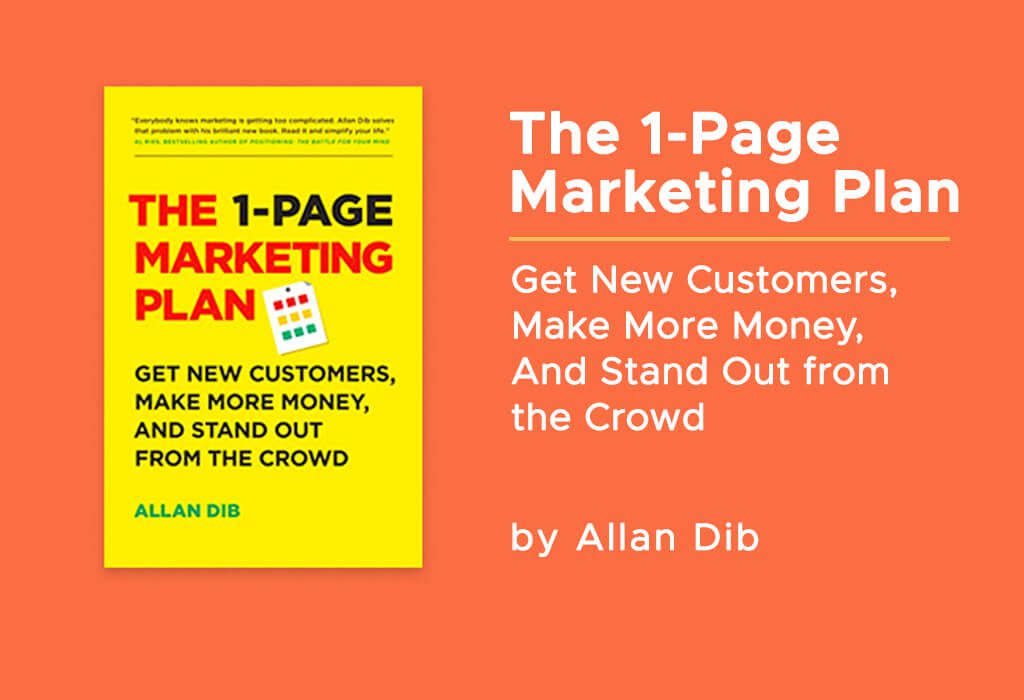"The 1-Page Marketing Plan" is a well-structured and straightforward book that assists business owners and small to medium-sized enterprises (SMEs) in creating a successful marketing plan.
Why This Book?
Author Allan Dib wrote this book with the understanding that small and medium businesses often lack the resources to hire specialized marketing strategists like large corporations do. He believes that anyone can create their own marketing plan without needing a professional. Marketing should be simple and not overly complex.
The book emphasizes result-oriented strategies and offers well-defined steps to achieve marketing objectives. It features nine key squares, each representing a fundamental component of a marketing plan. Once filled out, these squares provide a clear and organized marketing strategy without much hassle.
Stages of Creating a 1-Page Marketing Plan According to the Book
The book divides the marketing plan into three main stages, each with three squares, resulting in a total of nine squares that guide the marketing process.
Stage 1: Before Meeting the Potential Customer
In this initial stage, the customer is unaware of your business. The goal is to make the target customer aware of your existence and convert them into a potential customer.
Square 1: Define the Target Market
- Understand the needs and desires of your target audience to effectively meet their needs and craft a compelling marketing message.
- Focus on a specific segment to save time, effort, and resources.
- Instead of targeting everyone, focus on a niche market where you can generate the best return.
Square 2: Create a Clear Marketing Message
- Write a marketing message that attracts your target audience while showcasing the value of your product or service.
- Set clear objectives for each message, as undefined goals often lead to missed opportunities.
- Understand your customer's mindset, set a goal, and keep refining through trial and error.
Square 3: Choose the Right Communication Channels
- Identify which social media platforms your audience uses and focus your marketing efforts there.
- Instead of advertising everywhere, create targeted campaigns to attract potential customers.
- Appeal to the emotions of your audience, as emotional connections can drive purchase decisions.
Stage 2: Engaging with Potential Customers
At this point, the potential customer knows about your business and is interested in what you offer. Your focus should now be on converting them into a paying customer and building loyalty.
Square 4: Attract Potential Customers
- Success in marketing is measured by how well you attract potential customers. The more potential customers you have, the higher your sales can be.
- Utilize Customer Relationship Management (CRM) systems to manage interactions effectively and boost profitability.
Square 5: Nurture Potential Customers
- Go beyond just offering products. Build relationships and show genuine interest in customer needs.
- Offer promotions and personalized deals, as everyone loves a good offer.
Square 6: Convert Interest into Sales
- Establish trust by demonstrating the value of your product or service.
- Differentiate your offering by competing on value rather than price alone.
- Provide limited choices to make the purchasing decision easier for customers.
Stage 3: After the Sale
Now you are dealing with existing customers who have already made a purchase. The objective is to enhance their loyalty and encourage repeat business.
Square 7: Deliver a High-Quality Experience
- Providing an exceptional customer experience turns customers into passionate advocates for your brand.
- Offer fast, effective service and address issues promptly to increase customer satisfaction.
Square 8: Maximize Customer Lifetime Value
- Retaining existing customers is more cost-effective than acquiring new ones.
- Understand customer needs, offer attractive deals, and maintain continuous communication.
Square 9: Encourage Referrals and Word-of-Mouth
- Encourage your satisfied customers to refer friends and family to your business.
- Word-of-mouth recommendations are powerful and can lead to acquiring new customers with minimal effort.
- Winning the trust of one customer can lead to gaining 250 new customers, as they naturally share their positive experiences.
Final Thoughts
Allan Dib successfully simplified the process of creating a marketing plan into just nine squares, each focusing on a specific element. For a strong marketing strategy:
- Understand your customer needs.
- Provide solutions with the best possible value.
- Consistency in application and commitment is key to achieving success.
Ultimately, the 1-Page Marketing Plan is not just a tool; its effectiveness lies in how well it is executed and maintained.
enrol now
enroll now
